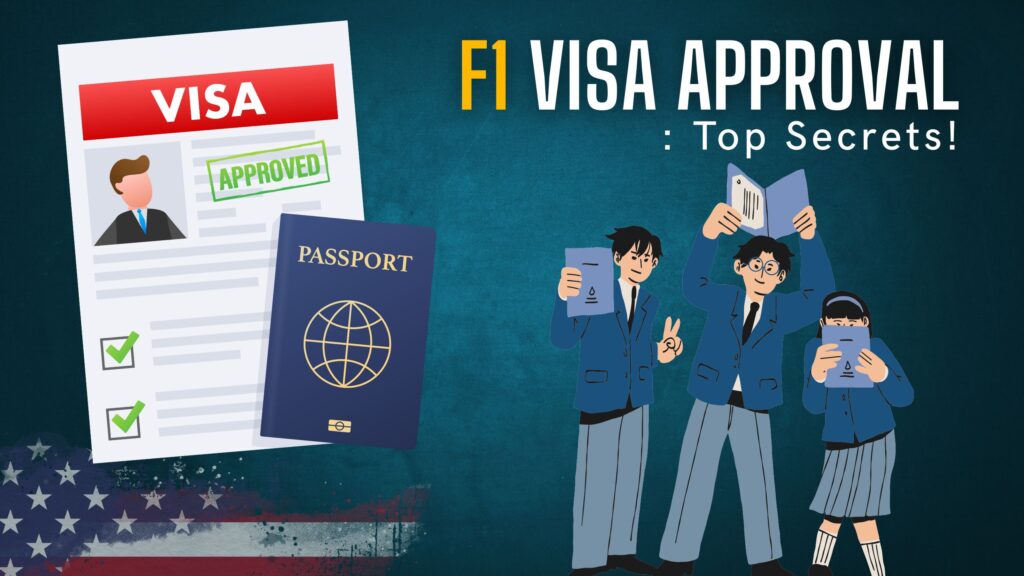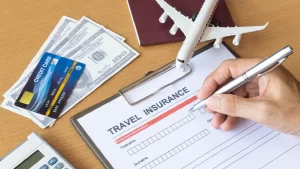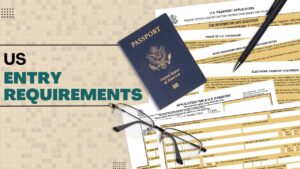Securing an F1 visa to study in the United States is an exciting step towards achieving your academic and career goals. The application process can be daunting and competitive. It’s essential to stay updated on the latest trends and tips for improving your chances of F1 visa approval. From preparing a strong application to demonstrating your intent to return to your home country, this guide will walk you through key strategies that work. Applying for the first time or looking for ways to strengthen your application, these tips will help you navigate the process with confidence.
F1 Visa Process
What is an F-1 Visa?
The F-1 visa is a non-immigrant visa that allows international students to study in the United States at institutions approved by the Student and Exchange Visitor Program (SEVP). This visa is the most commonly used for students aiming to pursue academic studies at a U.S. university, college, or other accredited educational institution.
To apply for an F-1 visa, you must first be accepted by a recognized U.S. institution. Once accepted, the school will issue a Form I-20, which is a crucial document required for your visa application.
The length of your stay on an F-1 visa depends on the specific program you enroll in. The Form I-20 will indicate the expiration date of your program. Expected to complete your degree before this date, and this document will serve as a guide to how long you can remain in the U.S. on an F-1 visa.
Eligibility Requirements for the F1 Visa
- Acceptance by a SEVP-certified school.
- Proof of sufficient financial resources.
- Intent to return home after studies.
- Maintenance of a full course load.
F1 Visa Application Process
The F1 visa approval process is essential for students wishing to study in the U.S. It includes submitting the DS-160 form, obtaining an I-20 form from a U.S. institution, proving financial stability, and attending an embassy interview. Following these steps increases the chances of F1 visa approval.
- I-20 Form Issuance: Once admitted, your school provides a Form I-20, which confirms enrollment and eligibility for the visa.
- Completing the DS-160 Form: The online nonimmigrant visa application where you provide personal, educational, and financial information.
- Scheduling and Attending the Visa Interview: Book your interview slot at a U.S. embassy or consulate and prepare to demonstrate eligibility.
- Additional Steps: Payment of visa fees, SEVIS fee (to support the Student and Exchange Visitor Information System), and submitting supporting documents.
F-1 Visa Requirements
There are several F-1 visa rules to keep in mind if you plan to apply for a F-1 student visa. You must meet these requirements for your application to be accepted:
- Institution Certification – The college or the university where you plan to study needs to be approved by SEVP Immigration & Customs Enforcement.
- Full-time enrolment – Must be enrolled as a full-time student at the institution while your academic term is in session.
- English language proficiency – Must meet the required English language proficiency score of the institution you are attending or be enrolled in courses that will help you improve your English proficiency.
- Sufficient funding – Must prove you have sufficient funds available to finance your studies and living expenses while in the US.
- Valid Passport – Passport should be valid for US travel for at least six months after your program completion date.
- Home Country Residency – Required to have a residence in your home country to return to following the completion of your degree.
Tips for a Successful F1 Visa Application
Start the Process Early
Early preparation ensures you have enough time to gather documents, receive your I-20, complete the DS-160 form accurately, pay fees, and schedule your interview at a convenient time. Start months ahead of your program start date.
Be Honest and Transparent
Misrepresentation or false information can lead to outright denial or future bans. Answer questions truthfully and provide consistent data across forms and interviews.
Highlight Your Academic and Career Goals
Communicate clearly how your U.S. education fits into your long-term plans. A strong connection between your course and career aspirations persuades visa officers of your genuine intent.
Build Strong Financial Proof
Provide thorough and verifiable financial documents demonstrating sufficient funds for the entire duration of your studies, including contingencies.
Prepare for the Visa Interview
Practice answers for common questions about your study plans, finances, and intent to return home. Demonstrate confidence and clarity during the interview.
Be Clear on Your Intent to Return
Consular officers must be convinced you won’t overstay your visa. Provide concrete examples proving your ties to your country and your intention to come back.
Common Pitfalls to Avoid
- Mistakes in the Application Form: Errors or omissions in your DS-160 can cause delays or denial.
- Inadequate Financial Documentation: Insufficient proof of funds or vague documents lead to doubts about your ability to financially sustain yourself.
- Inconsistent or Unrealistic Academic Plans: Lack of a coherent narrative on why you chose your program weakens your application.
- Failure to Demonstrate Non-Immigrant Intent: The most common reason for denial; applicants failing to prove ties to their home country often face rejection.
What’s New in the F1 Visa Process for 2025?
Changes in the Visa Interview Process
In 2025, some consulates have added biometric verification steps and updated interview protocols to enhance security and efficiency.
Impact of U.S. Immigration Policies on F1 Visa Approvals
Recent policy adjustments emphasize stronger scrutiny on financial sufficiency and non-immigrant intent but aim to facilitate legitimate student flows.
Technological Advancements in Visa Processing
Improved digital platforms now allow faster DS-160 processing and interview scheduling. AI-driven systems assist consular officers in reviewing applications more thoroughly.
Handling Visa Rejection: What to Do Next
If your F1 visa is rejected, don’t be discouraged. Review the reason for the rejection carefully, and address any weaknesses in your application. Reapply with stronger documentation and clearer explanations. Seek expert advice to improve your chances of F1 visa approval in your next attempt.
Reasons for F1 Visa Denial
Common causes include insufficient financial proof, unclear academic intent, inadequate ties to home country, or incomplete documentation.
Steps to Take After a Denial
- Review the denial reason carefully.
- Address any deficiencies identified.
- Consider reapplying after improving your application materials.
- Reflect on interview performance and prepare better.
When to Consider Legal Assistance
If you receive multiple denials or face complex immigration issues, consulting an immigration lawyer can clarify options and improve chances of approval.
Final Thoughts on F1 Visa Approval in 2025
Success in obtaining the F1 visa boils down to thorough preparation, honesty, and clear demonstration of intent. Staying up-to-date with changes in the application process is key. Persistence is vital—rejections are not the end if you apply improvements.
F1 visa process is challenging but navigable with proper planning and organization. Start early, be transparent, prepare meticulously, and clearly convey your academic and career goals. By following these strategies, you set yourself up for a higher chance of approval and a rewarding educational journey in the United States.
What is an F1 Visa?
F1 Visa is a non-immigrant visa that allows international students to study in the United States at accredited colleges, universities, or language training programs. This visa is specifically for academic purposes.
How do I apply for an F1 Visa?
To apply for an F1 Visa, follow these steps:
- Get accepted by a Student and Exchange Visitor Program (SEVP)-approved school.
- Pay the SEVIS fee.
- Complete the DS-160 form online.
- Schedule a visa interview at a U.S. embassy or consulate.
- Attend the interview with all required documents (passport, DS-160 confirmation, visa fee receipt, SEVIS fee receipt, Form I-20, etc.).
How long does it take to get an F1 Visa?
Processing times for an F1 visa can vary depending on the U.S. embassy or consulate. Typically, it can take anywhere from a few weeks to a couple of months. It’s recommended to apply at least 3 to 4 months before your intended travel date.
Can I work with an F1 Visa?
While on an F1 Visa, you are allowed to work under certain conditions:
- On-campus employment is allowed up to 20 hours per week during the school year and full-time during holidays or breaks.
- Off-campus employment is possible through Optional Practical Training (OPT) or Curricular Practical Training (CPT), but only after meeting certain conditions.
What is the difference between F1 and F2 Visas?
F1 Visa is for the primary international student who is enrolled in a U.S. educational institution. The F2 Visa is for dependents (spouse and children under 21) of F1 Visa holders. F2 Visa holders are generally not permitted to work but may study part-time.
Can I bring my family with an F1 Visa?
Yes, you can bring your spouse and children under the age of 21 on an F2 Visa. They cannot work but can accompany you while you study in the U.S.
What happens if I overstay my F1 Visa?
Overstaying your F1 Visa can lead to serious consequences, including being banned from reentering the U.S. for a specific period. If you overstay, you should consult with an immigration attorney to understand the next steps.
How long can I stay in the U.S. after my F1 Visa expires?
Once your F1 Visa expires, you cannot stay in the U.S. beyond the grace period provided. Typically, the grace period for an F1 Visa is 60 days after completing your course of study. During this time, you must leave the U.S. or apply for a change of status.






